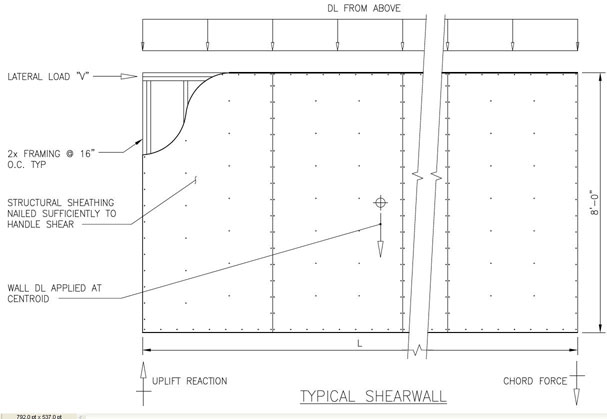Shear Wall Structure
Shear wall from braced panels
- Counter the effects of lateral load acting on a structure
- Load bearing or non-load bearing
- Possibility for nonplanar shear wall.
Get 13 % discount by ordering before March 31.

In structural engineering, a shear wall is a structural system composed of braced panels (also known as shear panels) to counter the effects of lateral load acting on a structure. Wind and seismic[1] loads are the most common loads that shear walls are designed to carry. Under several building codes, including the International Building Code (where it is called a braced wall line) and Uniform Building Code, all exterior wall lines in wood or steel frame construction must be braced. Depending on the size of the building some interior walls must be braced as well.
A structure of shear walls in the center of a large building — often encasing an elevator shaft or stairwell — form a shear core.
A typical timber shearwall is to create braced panels in the wall line using structural plywood sheathing with specific nailing at the edges and supporting framing of the panel. A more traditional method is to use let-in diagonal wood bracing throughout the wall line, and a newer alternative is let-in metal T-bracing, but these methods may not be adequate for buildings with many door and window openings or seismic or high wind conditions.
Such walls can be either load bearing or non-load bearing.
Shear walls resist in-plane loads that are applied along its height. The applied load is generally transferred to the wall by a diaphragm or collector or drag member. They are built in wood, concrete, and CMU (masonry).
Plywood is the conventional material used in shear walls, but with advances in technology and modern building methods, other prefabricated options have made it possible to inject shear assemblies into narrow walls that fall at either side of an opening. Sheet steel and steel-backed shear panels in the place of structural plywood in shear walls has proved to provide stronger seismic resistance.